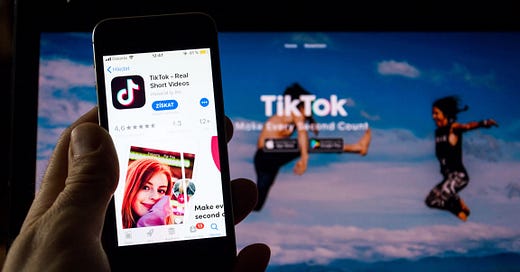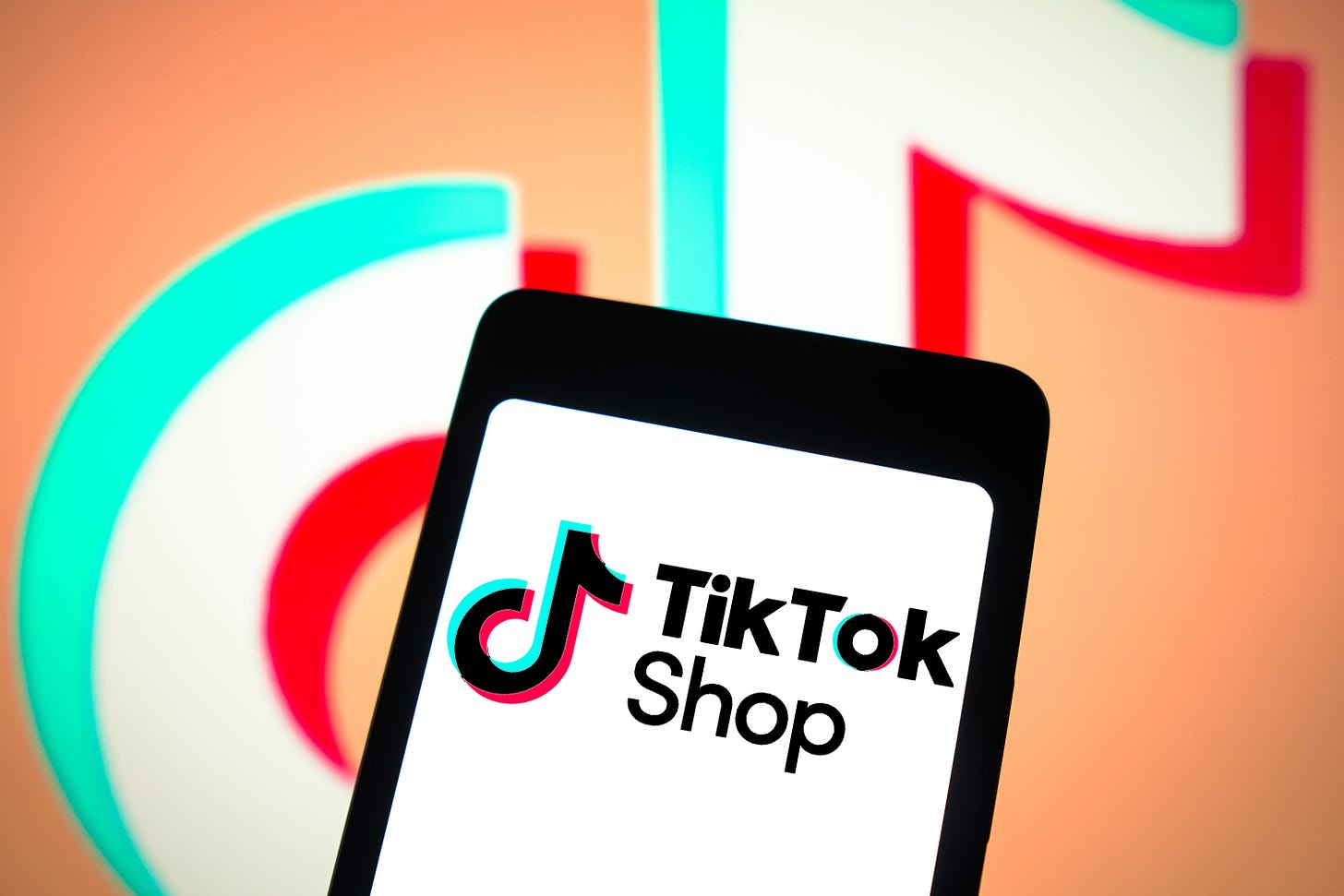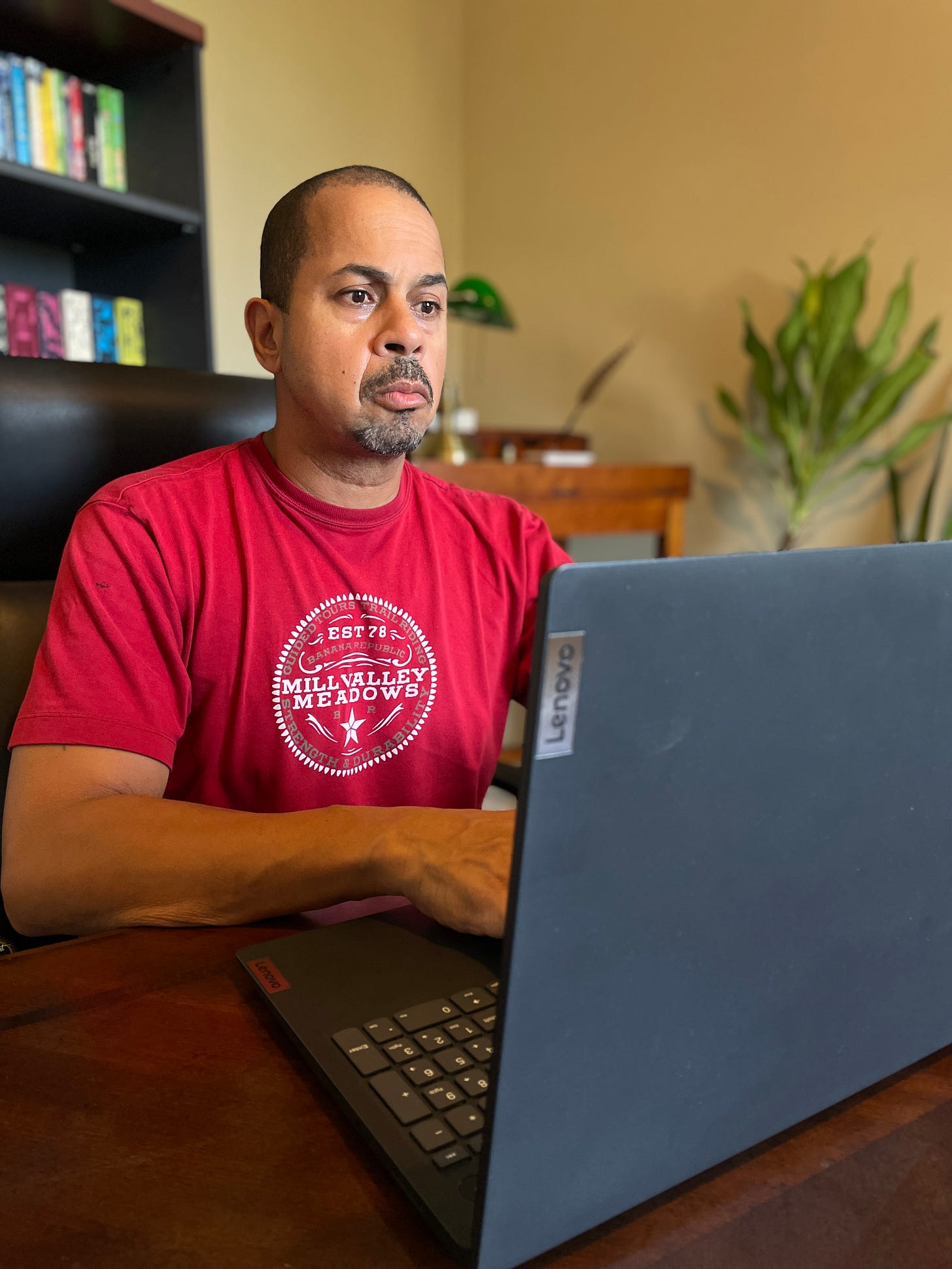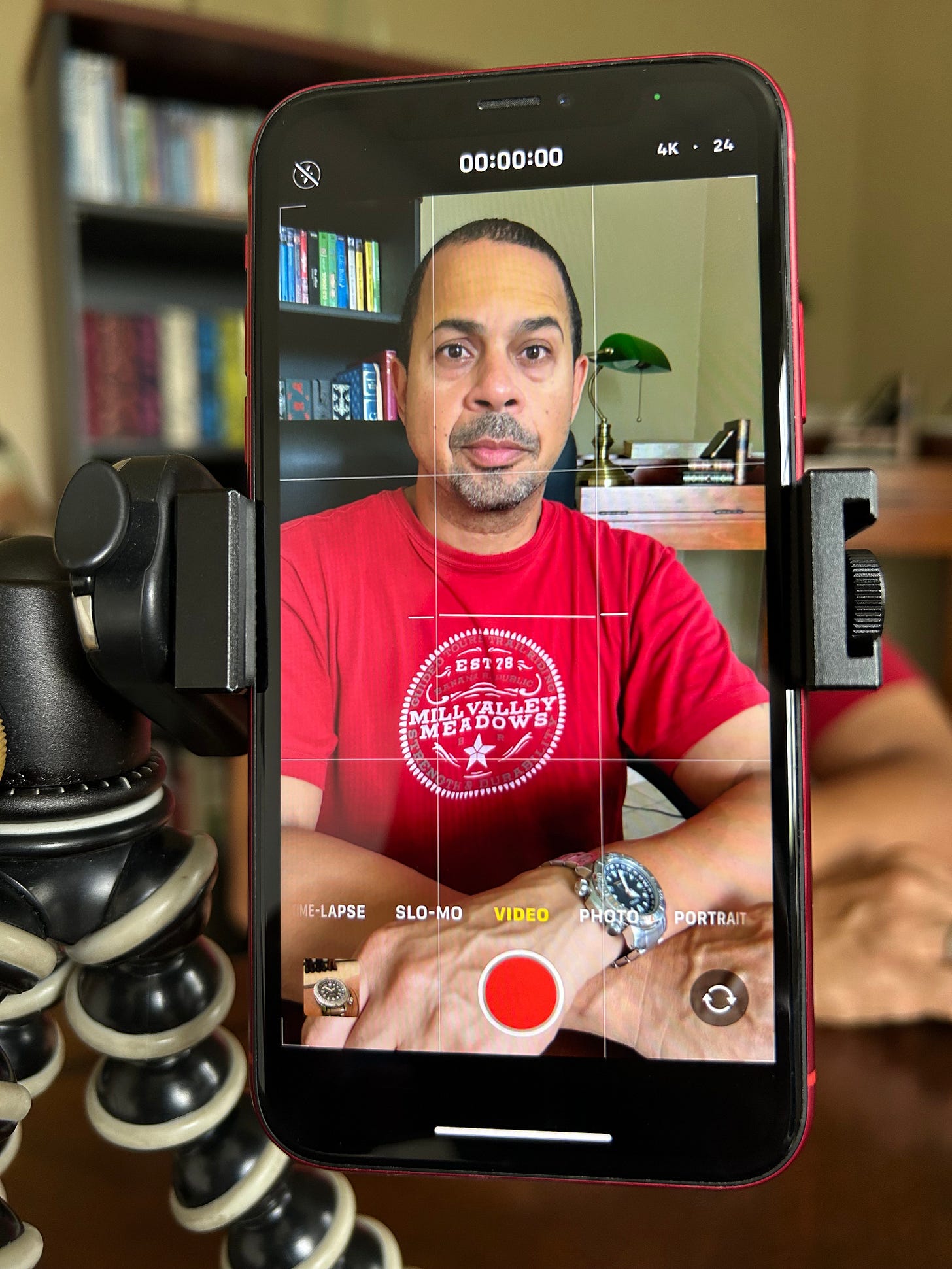The TikTok Ban: How do US TikTokers make money now
TikTok changed countless lives; lives which are about to change again.
Your audience and income vanish overnight. What do you do?
This is the gut-wrenching reality facing millions of US authors, filmmakers, musicians, artists, entrepreneurs, small business owners and content creators if TikTok goes dark in the next few days.
Few people can fathom an existential crisis of this magnitude; save for those who had to scramble to keep the lights on and put food on the table after unexpectedly losing their job. Ironically, that’s precisely the kind of desperation that drove people to TikTok in the first place. Now it’s happening to them again.
For millions of Americans, TikTok isn’t just an app where you go to waste countless hours of your life. Although, it’s pretty good for that too. It’s a massive engine that powers dreams, ambitions and careers of everyday people in practically every conceivable industry. It’s a colossal socio-economic ecosystem that creates invaluable human connections that are spun into income. That could be sales of products and services, brand deals, sponsorships, creator payouts, you name it.
If you’re a Tiktoker buckling under financial uncertainty and the emotional toll of starting over because of the looming shutdown of the platform, you’re probably hyperventilating over options.
Do I just watch my business collapse into the void? Do I quit creating content? Do I go dark too? Do I slink back to the soul-sucking corporate grind? Well, some folks may very well check all of the above.
Still, it’s livelihoods and quality-of-life at stake here, you’ll most likely try to migrate to other social media apps. Matter of fact, that counsel is all over TikTok—ramp up your efforts to build an audience on other platforms! Got it. Except no one’s telling you exactly how to do that.
You probably already know you should never put all your eggs in one basket. That sage wisdom is cold comfort to people sitting there with all their eggs in one basket. The truth is, many TikTokers already have accounts on platforms like YouTube, Instagram and Facebook. The problem is they struggle on those platforms, if not downright flop.
But rolling over and dying isn’t an option for people who earn their living online, so I’m going to share some strategies that can help ‘TikTok refugees’ find success on other social media apps.
Getting traction on other social media platforms won’t be easy, but anything worth doing rarely is.
Why TikTok means so much to so many people
TikTok is no longer an app for dancing teens and cat people. It has evolved quickly and dramatically to become an economic powerhouse giving entrepreneurs, businesses and content creators growth that hasn’t been replicated on any other platform.
TikTok has:
- Built new businesses from scratch and reimagined what entrepreneurship can look like.
- Made it possible for people to quit toxic jobs and earn bigger incomes from their phone.
- Established active and engaged online communities like no other social media—booktok, poemtok, guitartok, farmtok, historytok, crimetok, spacetok, etc.
- Revived interest in books, films, art, history and science.
- Gave creatives—authors, filmmakers, musicians, artists, illustrators, etc—the opportunity to make a dependable income from their creative talents.
- Transformed video content creation by giving creators free access to an extensive music library, sophisticated transitions and filters and free burnt-in captions. It’s raised the bar for visual storytelling, cinematography, editing styles, news stories, comedic skits and even doing live videos.
- Turned content creation into a truly lucrative skill.
To its creators and audiences, TikTok represents economic freedom, community, comradery and freedom of expression in ways matched by no other social media app.
TikTok’s secret-sauce algorithm
To date, there simply is no rival to the TikTok algorithm and why it keeps users so engaged on the platform.
All social media apps are driven by proprietary algorithms; what made the TikTok algorithm unique was its seeming omniscience. It excels at reading users preferences, continually serving them with videos similar to the ones they’ve watched, but injecting just enough novelty to keep the experience on the app fresh and engaging.
The TikTok algorithm knows what you like, but it’s also pretty good at figuring out what you MIGHT like—content you wouldn’t have considered on your own.
On the content creator’s side of the equation, no other social media platform offers TikTok’s promise of discovery, possibility and opportunity. None.
Granted, growth on TikTok slowed down somewhat as the platform became more saturated with users. But unlike other apps, the potential for going viral is infinitely more prevalent than you’d find anywhere else.
TikTok’s ability for putting its content creators in front of new audiences can’t be understated. And the speed and scale at which it does so is unmatched. You can literally post a video, go to bed and wake up the next morning to thousands of views and comments. When this happened to me for the first time on TikTok, the results were so shocking I thought it was some kind of glitch. That just shows you how much I’d grown accustomed to the slow death of my videos on platforms like YouTube and Instagram.
Now, I’m not saying TikTok doesn’t bring you down to size every now and then. I’ve had quite a few videos get stuck in the 300-view zone. Here’s the thing, though: on TikTok you have way more chances of having a hit than you get in other places. And when it hits, the results can be staggering. The life-changing stories on the platform are legion. I’ve lost count of the number of creators who’ve shown how their lives changed after just one video took off. That’s why the loss of the app in the US is such a terrifying prospect for so many people.
It’s not unusual for TikTokers to have videos with hundreds of thousands on the app, yet have almost lifeless YouTube and Instagram accounts.
TikTok is a grim reminder to master multi-platform skills
For entrepreneurs, small business owners, creatives and content creators, the TikTok ban in the US is a wake up call: it’s just too dangerous to rely on any one platform to reach our audiences. Many of us already know this, yet we tend to find ourselves planting our flags in just one digital location. Even Substack people are doing it right now.
The reasons for relying entirely on one platform are quite human. It’s not always the case that humans do something that’s against their best interests because they’re stupid. We know that on any social media platform, we’re just one algorithm change away from being cut off from our audience. Or in TikTok’s case, one legal maneuver away.
Still, we focus on one platform because it’s hard to be great on several platforms. Simply put, it’s a damn headache trying to grow audiences across multiple social media apps, all with different algorithms and user cultures. Why would anyone want to deal with all that if you’re getting the positive payoffs of great metrics and income in one place?
Millions of creators have been trying to build audiences on other platforms since the spectre of a TikTok ban first emerged during the first Trump administration. Doing that, though, takes time and persistence. Even so, the number of followers willing to follow you across to other platforms like the Pied Piper might not be large enough for a creator to keep body and soul together. An even bigger question is, will a following on another platform be commercially viable?
Thankfully, you don’t have to go gently into that good night. If you master some high-impact multi-platform skills you can increase your chances of success across social media. I’m going to tell you what I believe are THE most important multi-platform skills to sharpen.
For TikTokers wondering where to go, it’s not so much about where you’re going, but what you do when you get there.
First, you need a strategy
That’s not everyone’s favourite word, but it’s the first multi-platform skill you’ll need to get good at.
Depending on your niche, you can still be successful on TikTok without a concrete content strategy. That’s definitely not the case on other social media apps (YouTube, I’m talking about you).
Growing an audience on TikTok in a few months is easier than on other platforms. When I first went on TikTok in 2022, I was already late to the party. My fifth video, though, got 70,000 views—which is exceptional for content in my niche. I was also able to grow by hundreds, sometimes thousands of followers for each post.
Now that the platform has matured, the excitement of an early romance has settled into the more conservative returns of a marriage. To this day, though, I still have the chance of posting a video that can break 10,000 views in 24 hours. This is what sets TikTok apart from the rest.
Additionally, no other social media is like the ‘talking’ app. TikTok has a distinct vibe of being on the pulse of breaking news and trending topics. As such, you can just get on your phone and record a video of yourself weighing in on what’s happening and get seen by wide audiences. It’s not that you don’t need a strategy for TikTok; the app is just far less unforgiving if you don’t have one.
Other social media apps have never emulated the ability of the TikTok algorithm to give you so many chances for viral hits. So whether you’re going to try to rebuild on YouTube, Instagram, Threads, Facebook, LinkedIn, Substack, Snapchat, Clapper or even the Chinese app, Rednote, you’ll need a strategy.
Of course, every social media platform gives you the possibility of discoverability. On TikTok, though, that possibility is much higher. So, you can’t have a casual approach to content creation on these other platforms. A more thoughtful approach is necessary.
You need to brainstorm content with more of a big picture plan of attack rather than merely creating content today for today. You have to choose the kinds of videos you create with more intention. You’ll probably want to do a mix of content instead of sticking to one type—a bit of educational, some entertainment, a smattering of personal content. You’ll also want to be more deliberate with the topics you choose to talk about. In other words, no more waking up and thinking, “This sounds interesting, so I’ll make a video about it.”
Also, if you’re going to avoid a repeat of putting all your eggs in one basket, like the way we did on TikTok, a strategy becomes even more important. It’s the only way to boost your chances of having a successful multi-platform presence.
Click here to book a 1-on-1 video strategy call with me
Get good at scriptwriting
Second on my list of multi-platform skills to master is scriptwriting.
Competition for attention across social media is stiff and it’s only going to intensify. So you need to create the tightest, most engaging video viewing experience for your audience to grab and hold their attention. For that you need the guidance of a script.
A script is particularly important on platforms that don’t have the magic of the TikTok algorithm—which is basically everyone else. Also, keep in mind that if TikTok shuts down in the US, those platforms will become even more crowded as TikTok refugees are scattered to the winds.
Video scriptwriting is one of the most calculated strategies you can use to stimulate higher views, achieve better audience retention and spark greater engagement on your video content. It is the process of crafting a narrative journey with an attention-grabbing hook, compelling visual storytelling and a riveting pace and flow that builds momentum and sustains interest as the video moves along.
In all my videos, my goal is to have the audience become so entranced by what they’re watching that they’re surprised when it comes to an end. Good scriptwriting does more than share information of which there is no shortage online. It plays on psychology and strategy to plot a structured path that gets viewers invested on an emotional and intellectual level.
There’s a never ending cascade of video content on all social media feeds. This reality has shifted what people expect from the content they’re served. Audiences may not be consciously aware of it, but their tastes have already evolved to gravitate towards content that follows a well-plotted roadmap designed to grab and hold their attention. Anything else is typically disregarded.
Writing a good script infuses your videos with the ingredients that define how people consume content today.
To compete for audience attention on other social media platforms, you have to step up your video scriptwriting game.
Beef up your visual storytelling skills
Next on my list of multi-platform skills is visual storytelling; not to be confused with regular, old storytelling which happens to be another crucial component of videos that draw in audiences.
TikTok really spoiled content creators. You can just hold your phone and record yourself sharing your thoughts about breaking news, trending subjects or an intriguing tidbit of culture or history and reel in thousands of views. If you’re ‘fauncy’, you could do said chit-chat using TikTok’s green screen feature. No matter how simple your video, if what you’re saying is interesting enough your video can still score high.
Try that on YouTube and Instagram and it will feel like going from high school straight into a final year at university—you’ll get schooled in the worst way. Content creators on those platforms are already in the habit of producing visually-dynamic videos to account for the complexities of getting views and engagement. As such, audiences there have an inbuilt expectation for content that has a bit more than just the talking-head look.
Incorporating B-roll as part of a visual storytelling strategy is an incredibly effective way of getting better traction across social media platforms. Video is a visual medium, so using B-roll—additional video, photos and graphics—to enhance your narrative will boost the appeal of your content to viewers.
Adding more visuals into your videos doesn’t have to be complicated. It just takes a bit more thought than your average talking head video.
Get on those titles and thumbnails
For Tiktokers who’ll be trying their hand at YouTube, welcome to the world of titles and thumbnails.
On TikTok, videos seamlessly autoplay on the For You and Following pages. On the YouTube mobile app, the autoplay doesn’t work the same way. It’s not as immediate. On the YouTube desktop app, you have to hover over a video to trigger the autoplay. So the title and thumbnail play a role in the videos viewers decide to watch.
Building an audience on YouTube means you’ll have to commit to learning how to write strong titles and create appealing thumbnails to entice viewers to click on your videos.
There’s one important caveat here: you’ll need to pace yourself. While there’s lots of tutorials on creating attention-grabbing titles and thumbnails, it’s not an exact science. So prepare for lots of experimenting, loads of flops and constantly making adjustments until you start to see better performance with your video content.
When it comes to YouTube, slow and steady is what gets you in the race.
Get better at speaking on camera
My final multi-platform skill for you to master (for now) is improving the way you speak on camera.
Again, the shutdown of TikTok in the US will see the other social media apps becoming even more crowded. That means you’ve got to stand out and be memorable in the way you speak to audiences, tell your stories and teach or share information.
TikTok’s unique culture still embraces the rambling, off-the-cuff talking style of content. You won’t be able to get away with any old way of speaking on the other platforms where structure and strategy play a bigger role in the success of content.
The way you speak on camera—understanding the power of pacing and energy, making your information concise, clear and easily digestible—is an invaluable skill on congested social media platforms. In the online world, everyone’s talking, but not everyone is getting heard. You want to be in the camp where folks are getting heard.
Click here to book a 1-on-1 on-camera coaching call with me
The end to TikTok in the US doesn’t have to mean THE end
Look, I’ve laid a lot on you to think about. I know it can seem daunting and even frustrating to have to now learn all these skills to have a chance of success on other platforms. But is there any other motivation more powerful than the need to preserve the life you’ve built for yourself? I don’t think so.
TikTok created a world where you could make money and live life on your own terms. That can be had on other online platforms. It’s just going to take work, drive and persistence. Those are the same elements that earned you success on TikTok. On the upside, you already have what it takes to create good content. It’s just a matter of sharpening up your skills to make that content even better for multi-platform success.
I know right now the situation seems bleak. I can feel the hopelessness in the videos from US creators on TikTok who are describing what the app means to them. Resilience, though, is a quality in all of us. We just have to deliberately tap into it.
Whatever happens, even if it’s not for the best, I believe we all have in us the gift of reinvention. Even in the most devastating of circumstances, there’s always an opportunity to rethink, reimagine and rebuild. You are resourceful and, if TikTok goes dark in the US, you can find new ways to thrive in an unpredictable digital world.
About the author: With 25+ years in broadcast and print journalism, documentary filmmaking and video marketing, Paolo Kernahan is now a creative entrepreneur who makes a living through books, online courses & online coaching.











